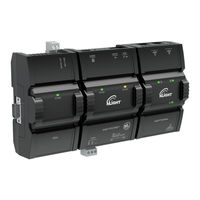Acuity Controls nLight ECLYPSE Controller Manuals
Manuals and User Guides for Acuity Controls nLight ECLYPSE Controller. We have 2 Acuity Controls nLight ECLYPSE Controller manuals available for free PDF download: User Manual, Safety Instructions
Acuity Controls nLight ECLYPSE User Manual (120 pages)
Brand: Acuity Controls
|
Category: Controller
|
Size: 6 MB
Table of Contents
Advertisement
Acuity Controls nLight ECLYPSE Safety Instructions (5 pages)
Brand: Acuity Controls
|
Category: Enclosure
|
Size: 0 MB

